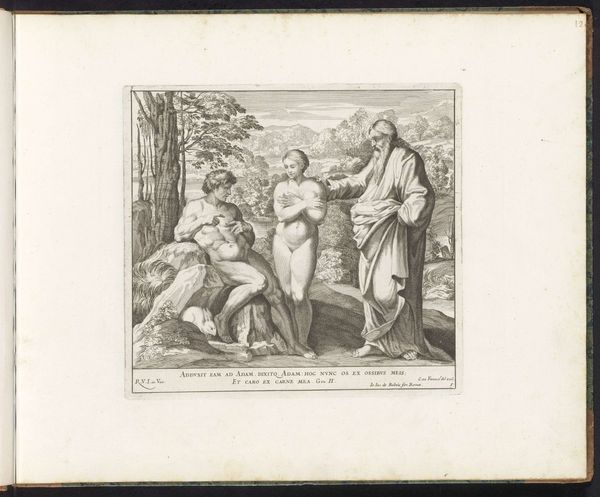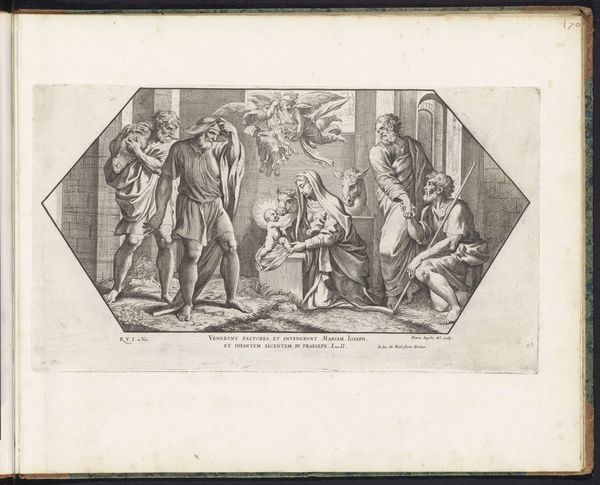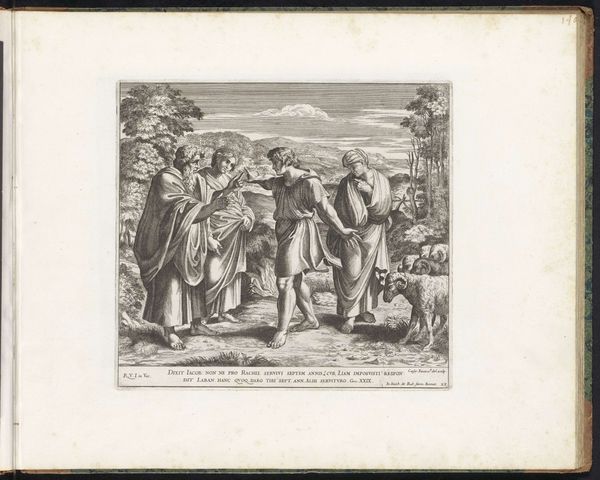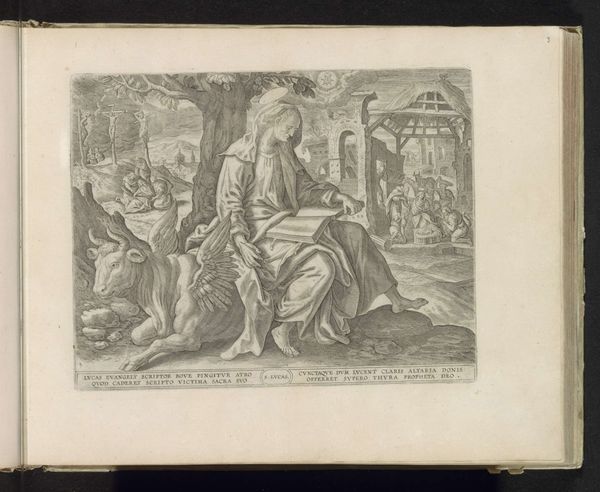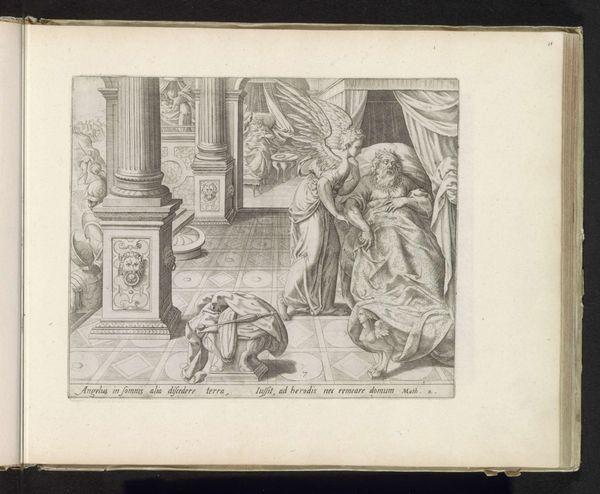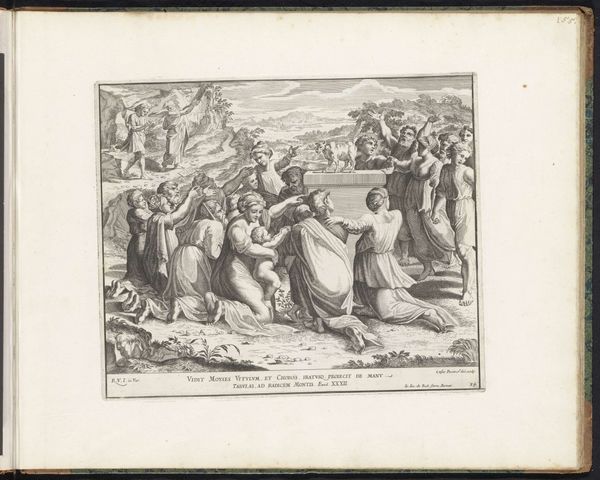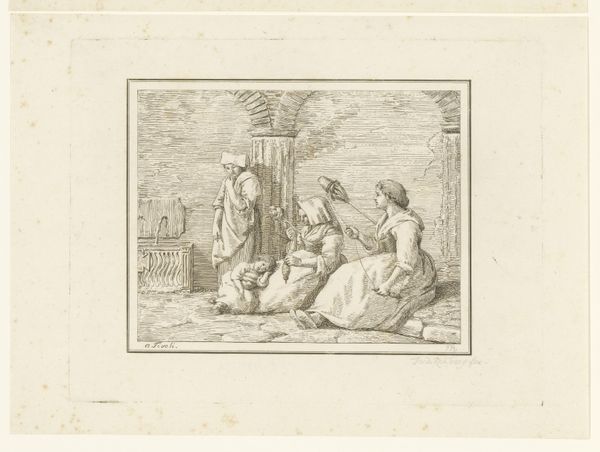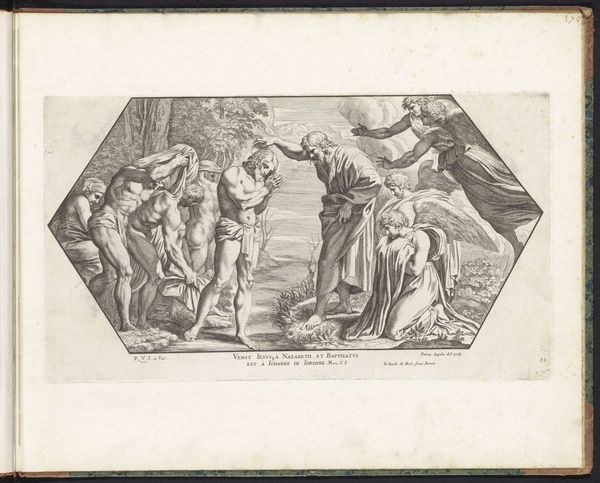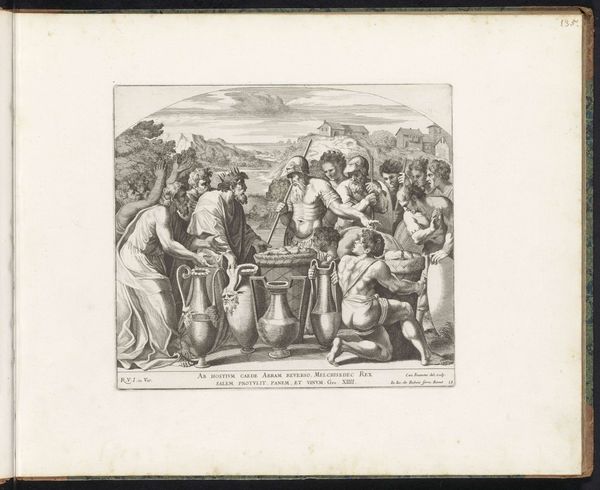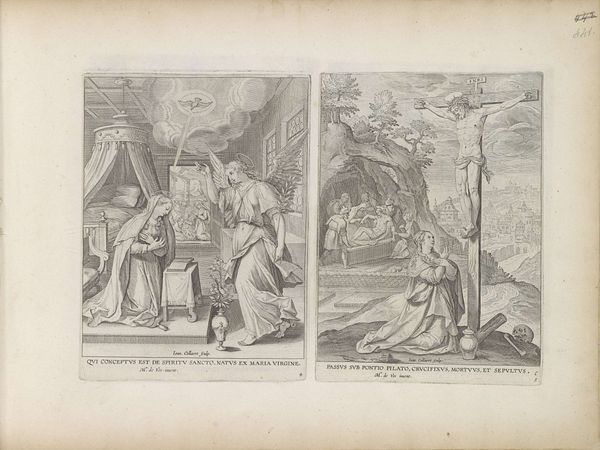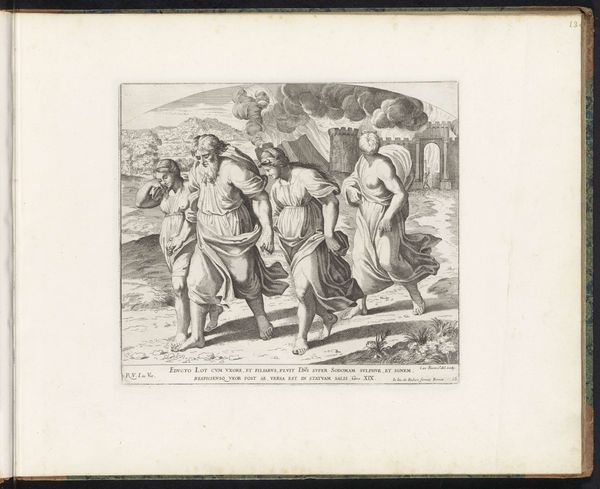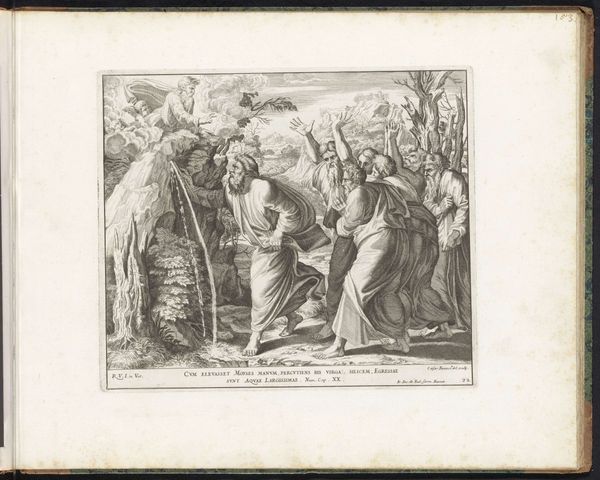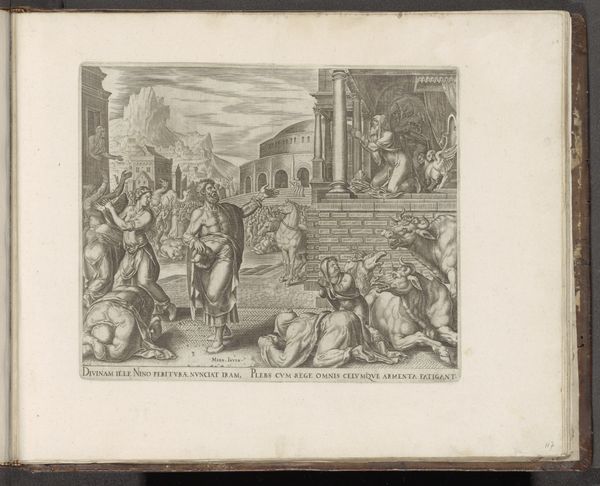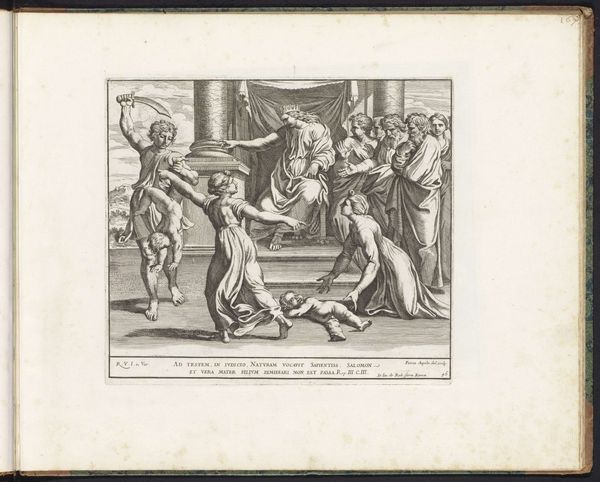
print, engraving
#
narrative-art
#
baroque
# print
#
figuration
#
line
#
history-painting
#
engraving
Dimensions: height 238 mm, width 263 mm
Copyright: Rijks Museum: Open Domain
Cesare Fantetti created this engraving, "Abraham and the Three Angels," sometime between 1660 and 1675, amidst a period of significant religious and political tension in Europe. This piece, drawn from the Book of Genesis, depicts Abraham encountering three divine visitors, an event laden with themes of hospitality, faith, and the promise of progeny. It's impossible to ignore the power dynamics at play. Abraham, an elder, kneels in deference before these youthful, androgynous figures. The posture of supplication underscores the patriarchal structure of the time. The figures themselves, rendered with a delicate grace, challenge conventional gender norms. Their flowing robes and soft features blur the lines, inviting questions about the representation of divinity and the fluidity of identity. Does Fantetti use their ambiguous forms to hint at a more expansive notion of the divine? What does it mean that the bearers of a divine message, one promising an heir, exist outside the traditional bounds of gender? Ultimately, Fantetti's engraving encourages us to consider how religious narratives can be reimagined. It invites us to explore new perspectives on faith, gender, and the very nature of the divine.
Comments
No comments
Be the first to comment and join the conversation on the ultimate creative platform.
